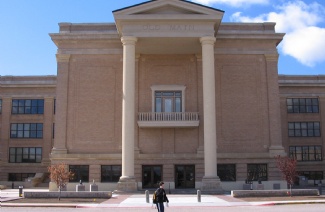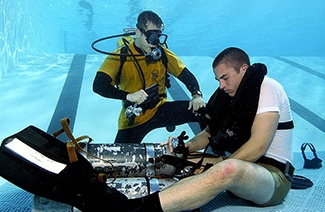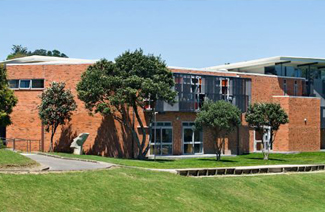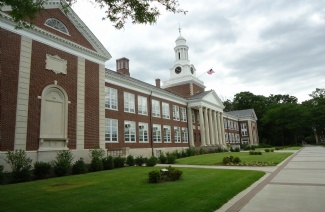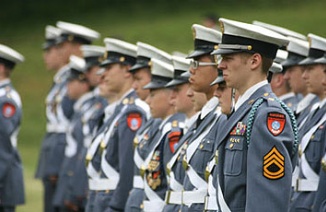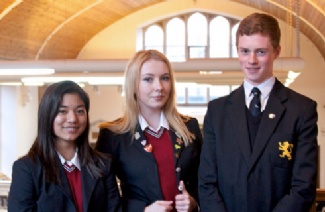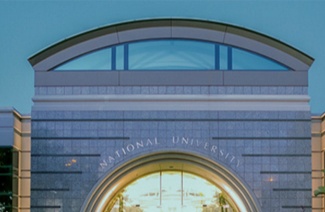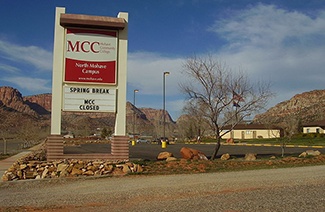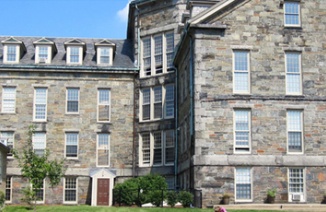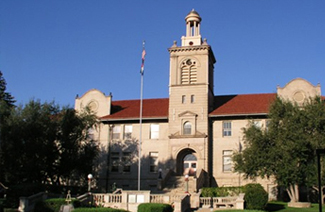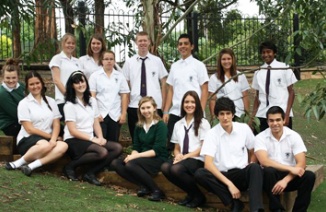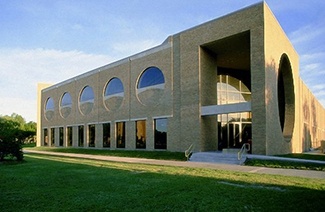小编为大家整理了TPO51
TPO51托福听力Lecture 3原文文本
标题:Audubon the Famous Illustrator
Listen to part of a lecture in an art history class. The professor has been discussing illustrated books.
Professor:
I want to take a look one particular book to give you an idea about what was involved in publishing illustrated books in the 1800s. The book’s called The Birds of the America and the illustrator was John James Audubon.
So, The Birds of the America, four volumes which contained illustrations of nearly every bird in the United States, over 400 birds, all hand-colored, all painted life-sized, the largest birds painted on the largest printing paper available at that time. This required a lot of dedication. And Audubon is best remembered as an incredibly meticulous accurate artist, a very accomplished illustrator of the natural world.
And while there were other artists working on the similar project at the same time, Audubon’s book remains the most well-known and successful of its kind about……Let’s talk a bit about Audubon himself first.
First of all, Audubon was not a traditional painter. And by this I mean that he didn’t work in oils. He preferred to use water color and pastel crayons. And he worked on paper instead of on canvas. The thing is, Audubon considered the illustrations in his book, not the original water colors, to be his finished product. His water colors were merely preparatory studies, most of which were painted while he was observing birds in the wild. These water colors were then sent to his printer who created the final prints for the book. And Audubon was so concerned with accuracy that he often scribbled notes to the printer around the edges of these original water colors.
In fact, you might question whether producing a work of art was even Audubon’s goal. Now, when I look at Audubon’s illustrations, I see a work of art. But, it may make more sense to consider Audubon, first and foremost, as a naturalist, as a scientist. See, the early 19 century when Audubon was painting was a time of major scientific inquiry. And an essential way of spreading the scientific knowledge was through those illustrated books.
Student:
So what did Audubon consider himself? An artist or scientist?
Professor:
I’m not sure the distinction between the two was all that clear in the 1800s. I think we can accurately state that the driving force in his art was getting the science right. And this was perhaps a point that critics of his art work at that time just didn’t appreciate.
Audubon also study birds in ways that didn’t directly inform his art. Ah, you know what bird banding is right? A bird has a band attached to its foot so we can learn about things like migration patterns. Well, the first recorded instance of anyone doing that, it was Audubon. Another example, a common belief of that time was that vultures used their sense of smell to find food. Audubon didn’t believe that. So, he tested it. He put a large painting of a dead sheep in a field, and sure enough, vultures found it and started pecking at it.
Now, Audubon’s work was very accurate, and we know this because we can compare his illustrations to the birds around us. But sometimes it’s not possible to check. There are actually several birds in his book that no one’s ever seen. These are sometimes called Audubon’s mystery birds, because even though he drew them, there is no evidence that they exist in the wild.
For someone who’s respected as a naturalist, isn’t it strange to think that he drew some birds that don’t appear to be real? For example, there is an illustration that appears to be a type of warbler, a small bird. It has a white ring around its eyes and white bars on its wings. No one’s ever seen a warbler like this, so some people wonder if Audubon maybe forgot certain details about this bird when he painted it, or that he copied another artist’s work. But considering that Audubon was such a meticulous artist, well, that might be a better answer.
Hybridization is something that’s well-known in birds. And it definitely explains the rather unique-looking duck Audubon painted. He himself suggested that maybe it wasn’t an unknown species but a hybrid, born from two different species. Since then, this particular crossing species has actually been recorded, both in the wild and in captivity. So it turns out that Audubon was right. And this duck actually was a hybrid.
TPO51托福听力Lecture 3题目
TPO51 6
What does the professor mainly discuss?
The steps involved in publishing illustrated books in the 1800s
The influence of Audubon's The Birds of America on science in the 1800s
The way in which an illustrator's work has both artistic and scientific significance
The need for accuracy in scientific illustrations
TPO51 7
According to the professor, what were two steps Audubon took in producing his illustrations?
Click on 2 answers.
He studied birds in their natural habitats.
He tracked birds along their migration paths.
He closely studied other illustrated books.
He provided the printer with detailed instructions.
TPO51 8
What does the professor imply about critics of Audubon's art?
They did not recognize the motivating factor in Audubon's art.
They did not like the stylistic changes that Audubon developed over time.
They were disappointed with Audubon's limited scope of subject matter.
They thought Audubon's use of oils was unsophisticated.
TPO51 9
Why does the professor discuss Audubon's experiments with vultures and banding birds?
To help students understand the state of scientific knowledge at the time
To provide support for his view of Audubon as a naturalist
To suggest that Audubon was more successful as a scientist than as an illustrator
To give examples that show the importance of detail in Audubon's illustrations
TPO51 10
What are Audubon’s "mystery birds"?
Bird illustrations created by Audubon that have been lost
Bird illustrations that do not seem to match any known species
Bird illustrations that were painted in an uncharacteristically careless manner
Bird illustrations that Audubon intended to be fanciful rather than realistic
TPO51 11
What does the professor believe is the most likely explanation for Audubon's warbler illustration? Audubon forgot small details when he made the illustration.
Audubon copied the bird from another artist's drawing.
The bird was the offspring of two different species.
That particular species of warbler has since gone extinct.
TPO51托福听力Lecture 3答案解析
6.答案:C
解析:
此题出处是:
Professor:
I want to take a look one particular book to give you an idea that what was involved in publishing illustrated books in the 1800s. The book’s called The Birds of the America and the illustrator was John James Audubon.
讲座开头教授就提到这节课是讲插画书籍的,例子就是《美国鸟类》这本书。整篇讲座也是围绕着这本书的艺术学和科学性的统一进行的。选项C符合原文。选项A说是讲出版插画书籍的步骤,选项B是讲这本书对于科学的影响,选项D是讲科学插画对准确性的要求,都不合适。选择C。
7.答案:AB
解析:
此题出处是:
Professor:
His water colors were merely preparatory studies, most of which were painted while he was observing birds in the wild.
……
Professor:
Audubon, also study birds in ways that didn’t directly inform his art. Ah, you know what’s bird banding right? A bird has a band attached to its foot so we can learn about things like migration patterns.
这里教授先后说了Audubon研究鸟类的两种方式,一种是在作画以前实地研究,另一种是通过例如给鸟类戴脚环这种方式来研究其迁徙模式,分别对应选项A和选项B。选项C说他仔细研究了其他的插画书籍,选项D说他给印刷商提供了详细的指导,都不合适。双选AB。
8.答案:A
解析:
此题出处是:
Professor:
I’m not sure the distinction between the two was all that clear in the 1800s. I think we can accurately state that the driving force in his art was getting the science right. And this was perhaps a point that critics of his art work at that time just didn’t appreciate.
这里教授说了,他觉得Audubon这样作画的动机应该是追求科学上的正确,但是当时的批评家并不能理解他的动机。选项A正确。选项B说他们不喜欢Audubon风格的变化,选项C说他们对于Audubon狭隘的研究对象感到失望,选项D说他们认为Audubon对于油画颜料的使用是不复杂的,都不合适。选择A。
9.答案:B
解析:
此题出处是:
Professor:
Audubon, also study birds in ways that didn’t directly inform his art. Ah, you know what’s bird banding right? A bird has a band attached to its foot so we can learn about things like migration patterns. Well, the first recorded instance of anyone doing that, it was Audubon. Another example, a common belief of that time was that vultures used their sense of smell to find food. Audubon didn’t believe that. So, he tested it. He put a large painting of a dead sheep in a field and sure enough, vultures found it and started pecking at it.
这里教授举秃鹫和鸟类脚环的目的就是说明Audubon也会通过一些非艺术性的手段来研究鸟类,他可以被称为一个自然学家。选项B正确。选项A说是为了让学生理解当时的科学知识的发展水平,选项C说是为了表明Audubon做科学家比做画家更出色,选项D是说为了表明Audubon插画里细节的重要性,都不合适。选择B。
10.答案:B
解析:
此题出处是:
Professor:
There are actually several birds in his book that no one has ever seen. These are sometimes called Audubon’s mystery birds, because even though he drew them, there is no evidence that they exist in the wild.
这里教授很清楚地讲到,Audubon的神秘鸟类是指现实中不被人知道的鸟。选项B正确。选项A说是已经丢失的Audubon的鸟类插画,选项C说是用一种一反常态的粗糙方式画出来的插画,选项D是说Audubon所画的偏向想象而不是偏向现实的插画。选择B。
11.答案:C
解析:
此题出处是:
Professor:
Hybridization is something that’s well-known in birds. And it definitely explains the rather unique-looking duck Audubon painted. He himself suggested that maybe it wasn’t an unknown species but a hybrid, born from two different species. Since then, this particular crossing the species has actually been recorded, both in the wild and in captivity. So it turns out that Audubon was right. And this duck actually was a hybrid.
这里教授清楚地解释了最有可能解释Audubon神秘鸟类的理论,那就是他画的是杂交的鸟。选项C正确。选项A说当他作画的时候忘记了一些细节,选项B说他抄的别人的画,选项D说是已经灭绝的鸣鸟,都不合适。选择C。
以上就是小编整理的精彩内容TPO51托福听力Lecture3文本+题目+答案解析一文,希望可以帮助
